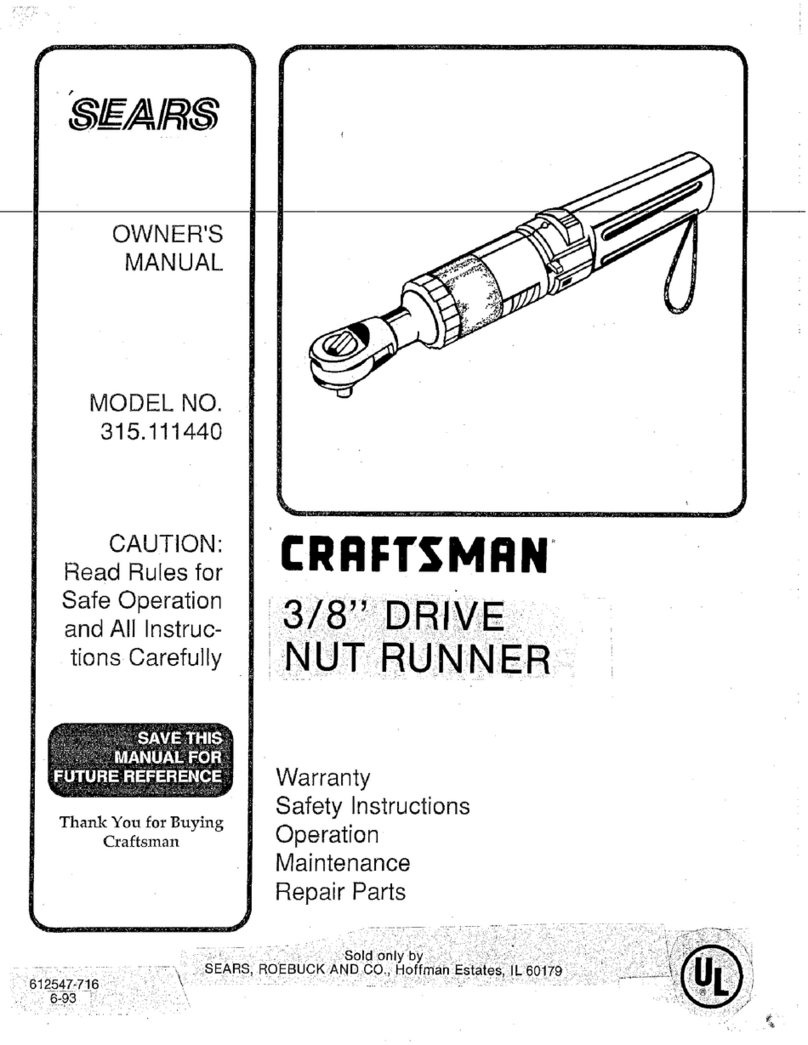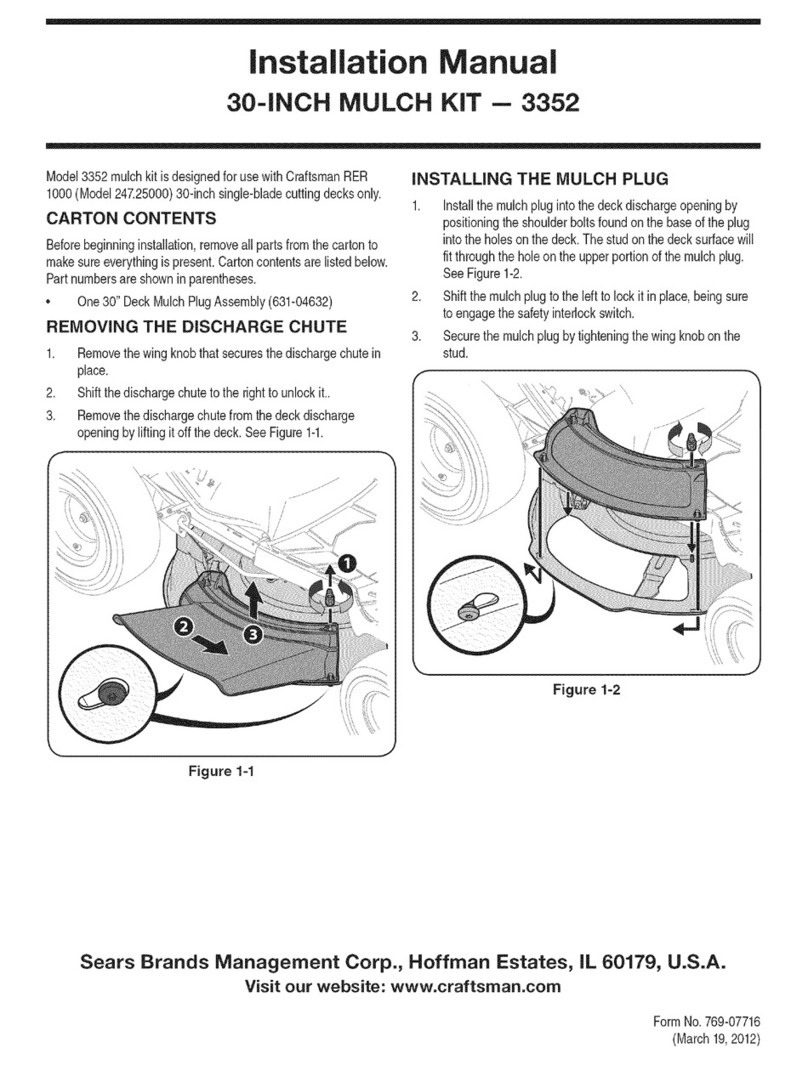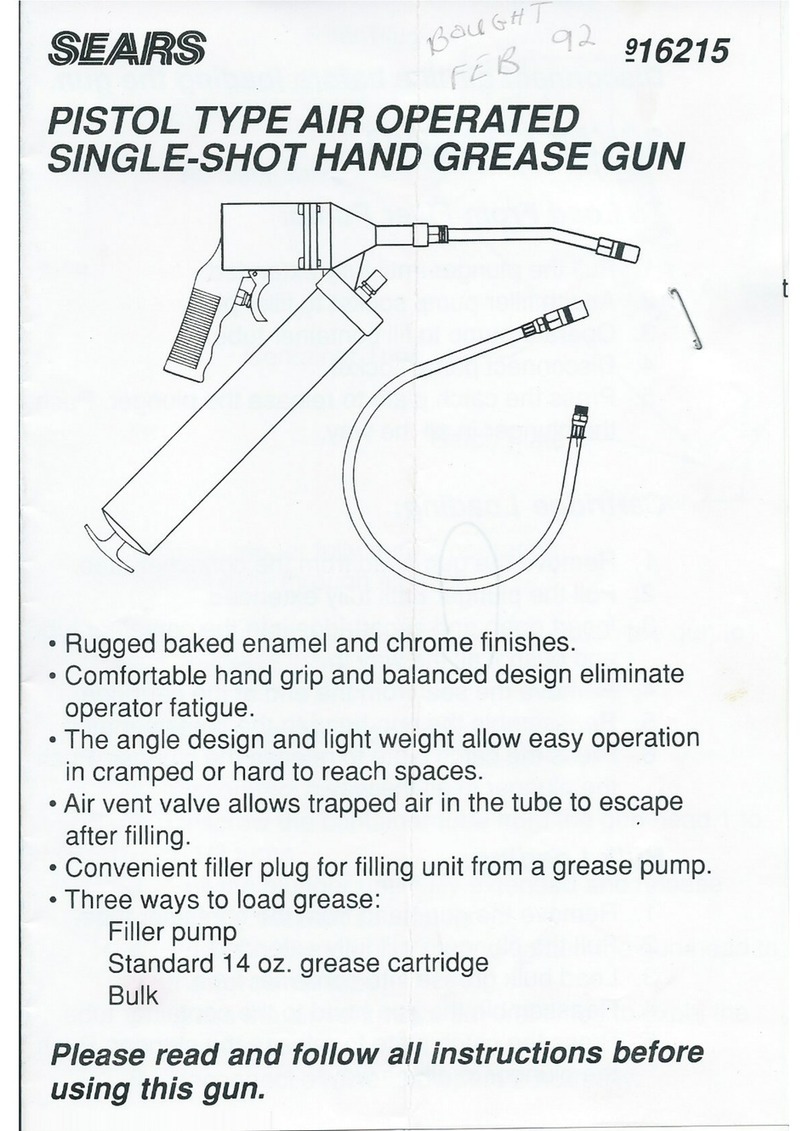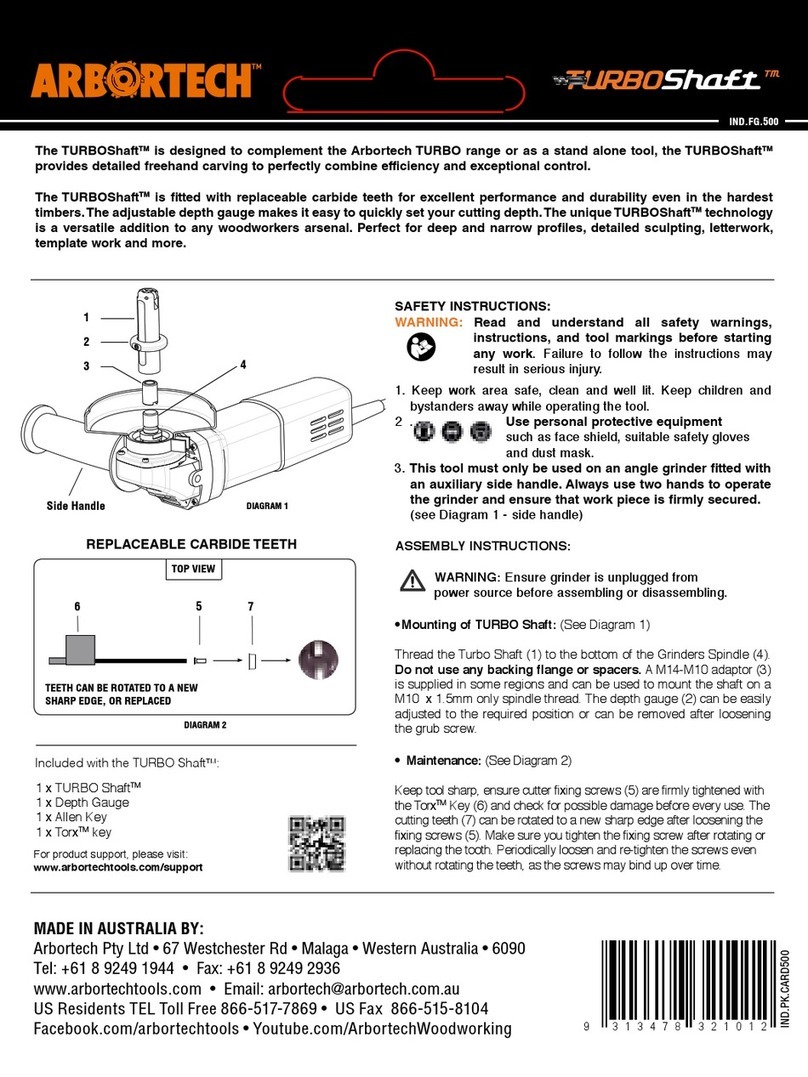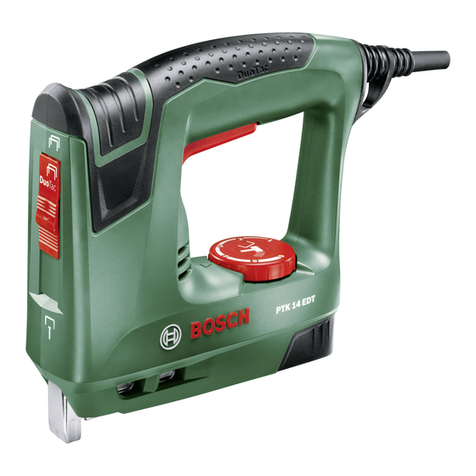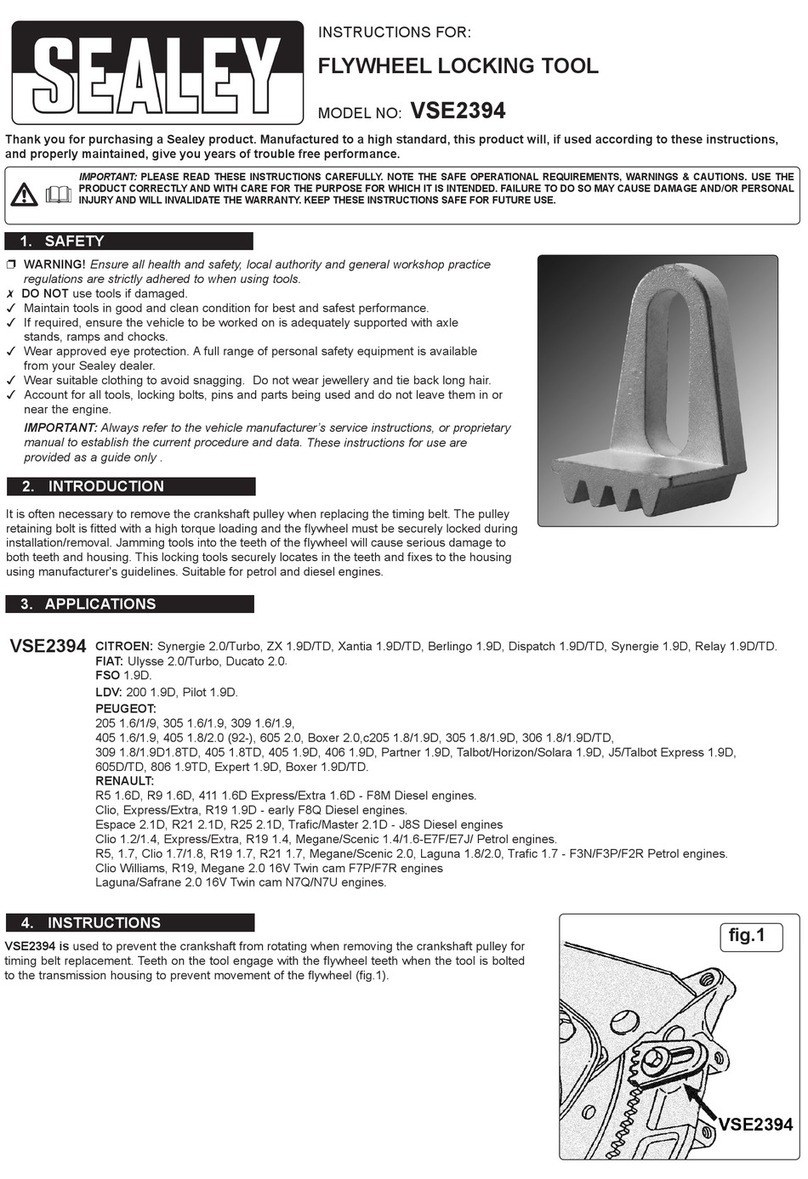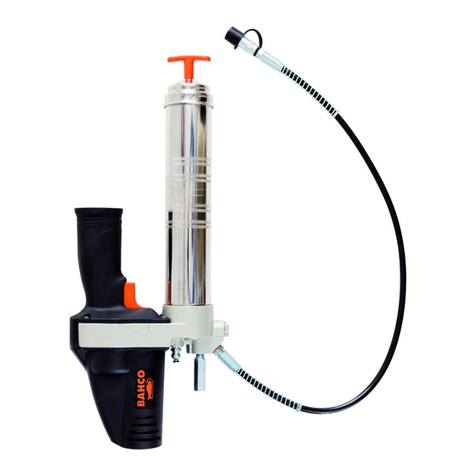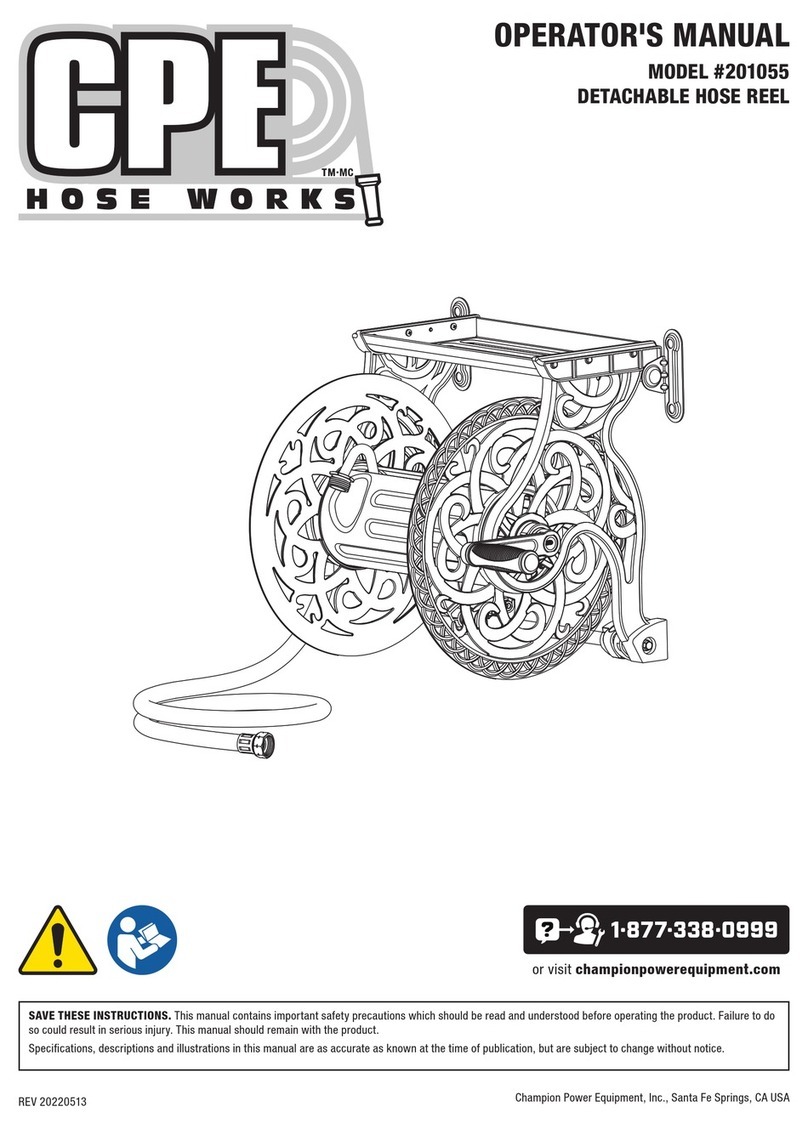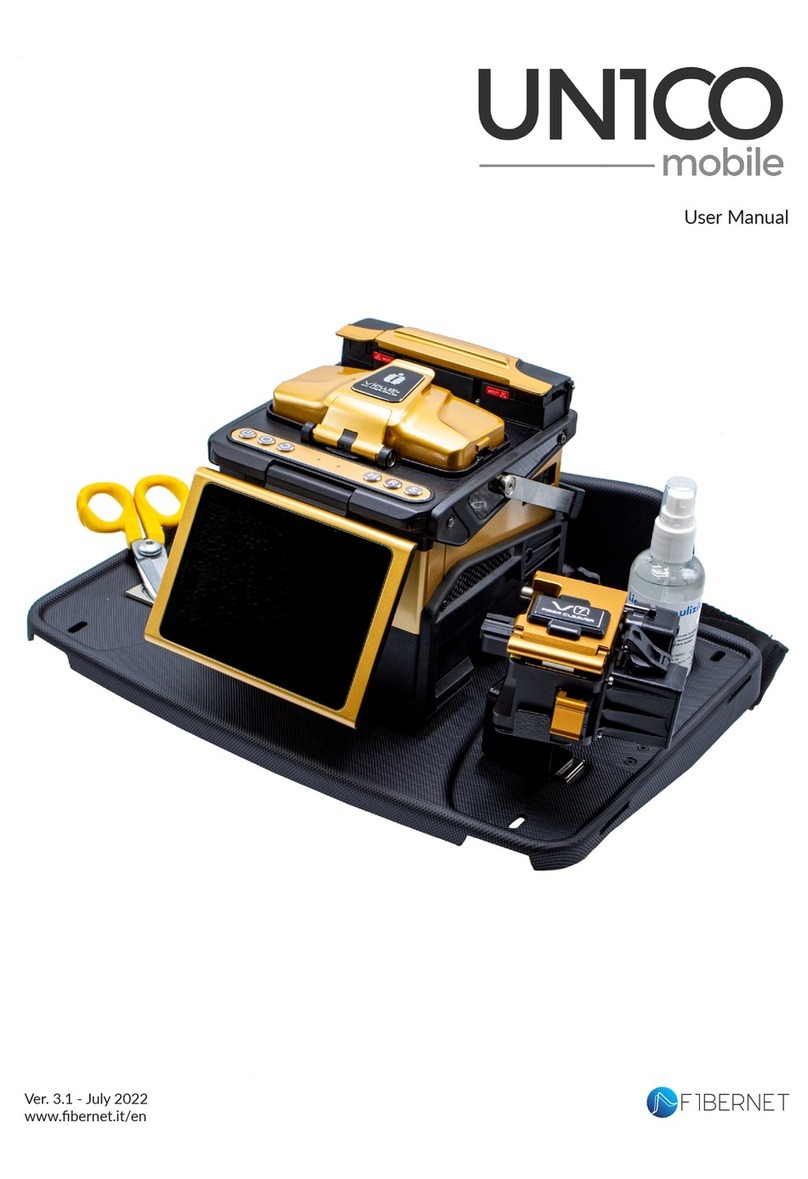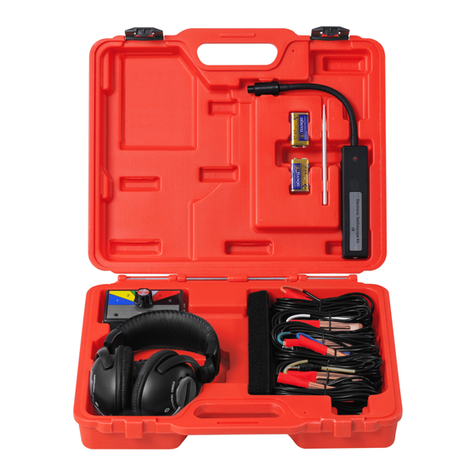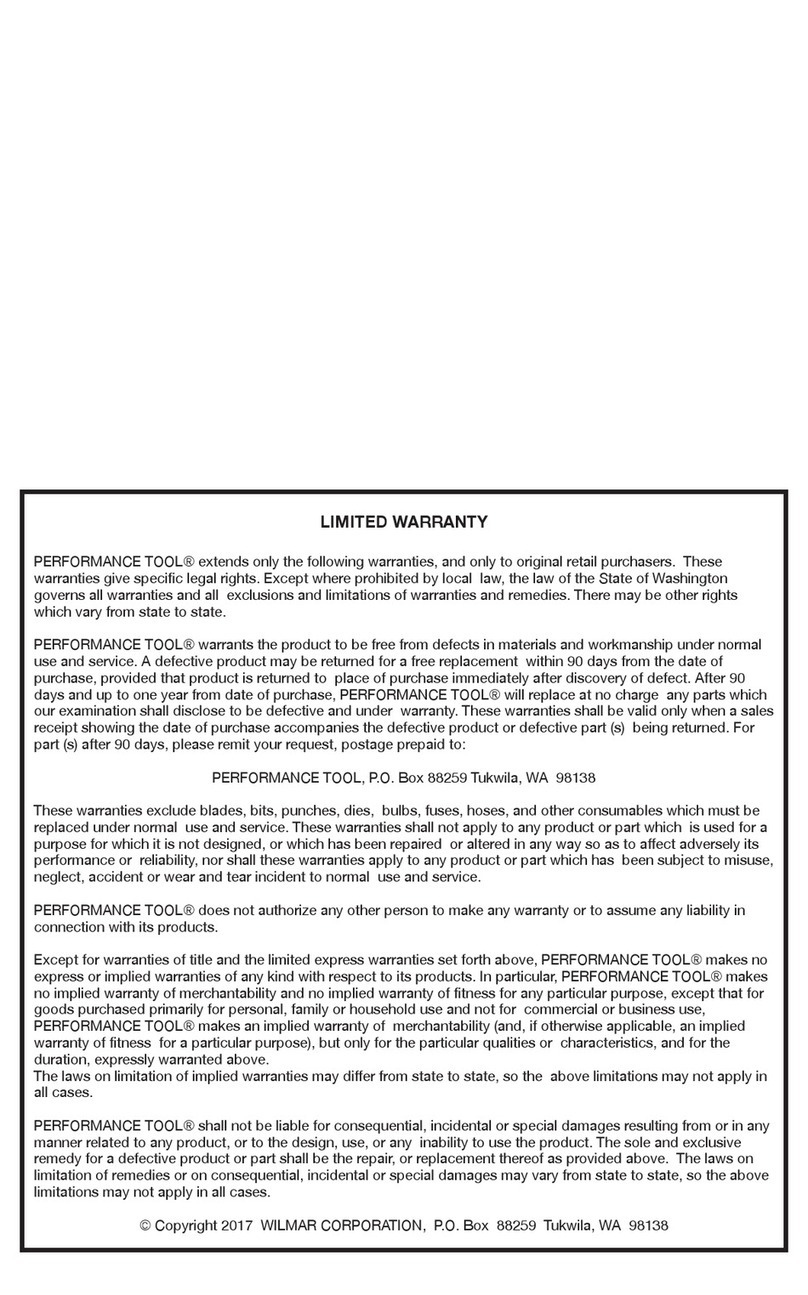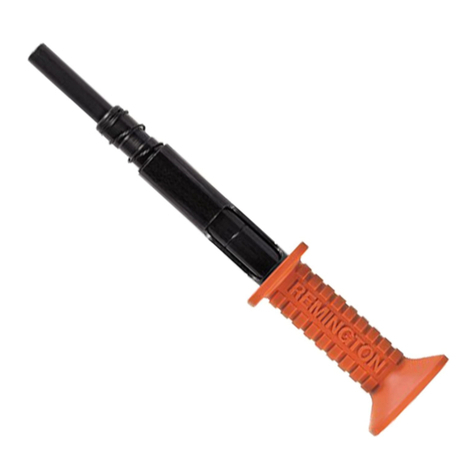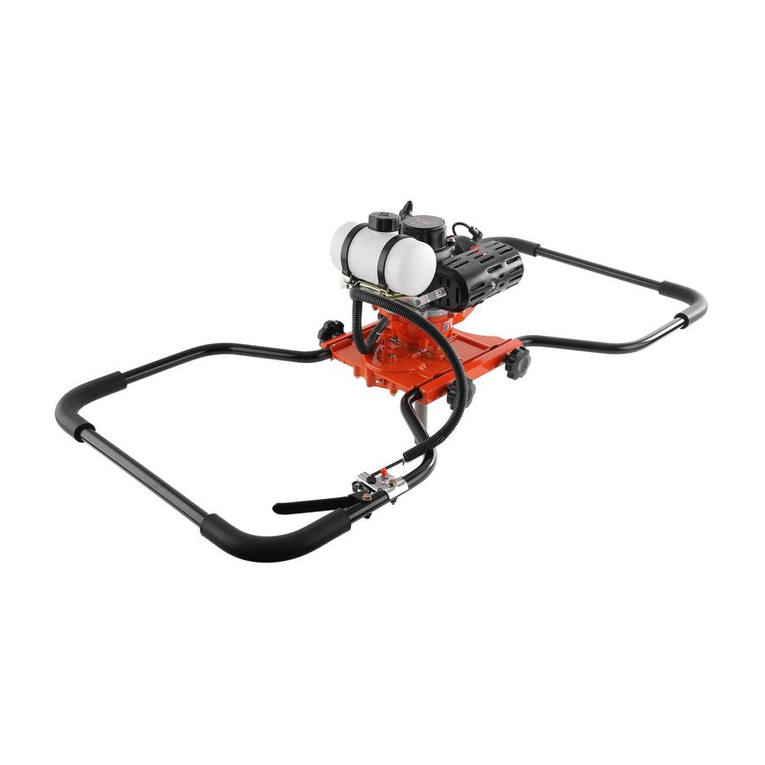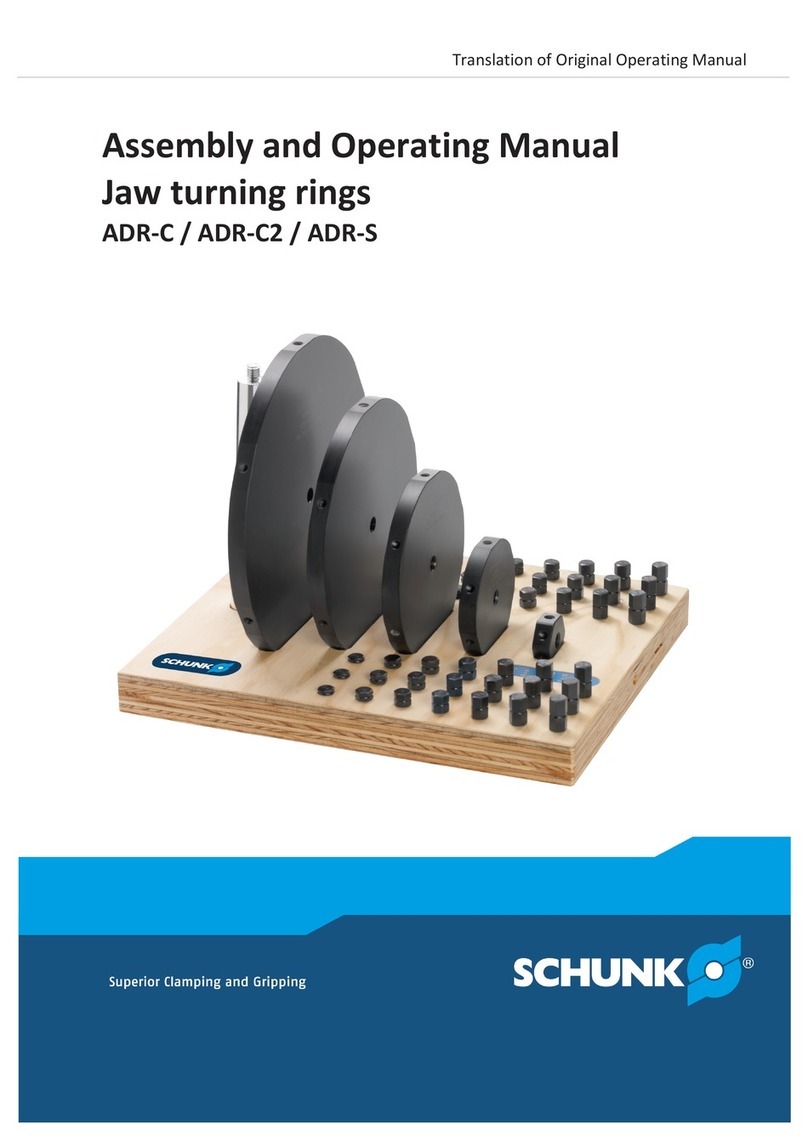Sears CRAFTSMAN 315.25710 User manual

and Instructions
Sears
dwweas
MANUAL
MODEL NC.
A
‘
ii“???
31525710
CAUTION:
Read Rules
for
Safe
cnnrrsmnrr
Carefully DOVETAIL TEMPLATE
(FOR USE WITH ROUTER MODEL NOS. 17310, 17350,
17360, 17361, 17370, 17371, 17380, 17381, 17390, 17400,
17430, 17460, 17470, 17480, 25031, 25060, 25066 AND
25070)
Introduction
Operation
Repair Parts
Designed exc|usive1y for and sold only by SEARS, ROEBUCK AND CO., Chicago, IL 60684 U.S.A.
2-620263-432
Hm
PRINTED
IN
u.s,A.

introduction
Your Dovetail Template is designed
to
produce flush
or
rabbeted type joinery with speed and accuracy.
These type joints
are
commonly used in the making
of drawers and boxes. The strongest and neatest ap-
pearing drawer
or
box is put together with
a
dovetail
joint.
Each pair of pieces
to
be joined together
are
dovetail
cut
at
the
same
time producing
a
perfect
fit.
Dove-
tail
cuts
of ‘/2 inch may be accomplished with the
template packed with this unit.
For making dovetail
cuts
of ‘A; inch, Sears has
an
additional template designed exclusively
to
be used
with this unit. This template is available from your
Catalog Order House
or
Retail Store.
RULES FOR SAFE OPERATION
Read instructions completely and carefully before and
during set up and making adjustment alterations. In-
structions
must
be followed closely for best results.
When all adjustments
are
properly made, they should
not
be changed until all dovetails
are
made.
Before making the final joint in the finished work,
make
a
trial
cut
on
two
scrap pieces of the
some
wood
to
check adjustments of attachment and compensate
for Eh: characteristics of the particular wood being
wor
e
.
Your Dovetail Template is packaged fully assembled
and set up for making flush ‘/2 inch joints.
BE SURE POWER CORD IS DISCONNECTED FROM POWER SUPPLY BEFORE ASSEMBLING, SERVICING
OR CHANGING ATTACHMENTS. BITS, CUTTERS, ETC.
BE SURE ALL ADJUSTMENTS ARE PROPERLY SET AND SECURELY FASTENED.
KEEP WORK AREA CLEAN, AS CLUTTERED AREAS AND BENCHES INVITE ACCIDENTS.
KEEP CHILDREN AWAY AND ALL VISITORS ASAFE DISTANCE FROM THE WORK AREA.
CHECK FREQUENTLY DURING OPERATION TO INSURE REQUIRED POSITION AND TO PREVENT
HOLDING MECHANISM FROM BECOMING LOOSENED.
S/A/FE GIASSES '
1\‘»‘FORES|GHT IS
BETTER THAN
‘
NO SIGHT
The operation of any power tool
can
result in for-
eign objects being thrown into the eyes, which
can
result in
severe
eye damage. Always
wear
safety
glasses
or
eye shields before commencing power
tool operation. We recommend Wide Vision Safety
Mask for
use
over
spectacles,
or
standard stafety
glasses
...
available
at
Sears retail
or
catalog
stores.
‘
MOUNTING
This Dovetail Template is designed for mak-
ing flush
or
rabbeted 1/2 inch dovetail joints
using Craftsman Routers Model Numbers
315.17310, 315.17350, 315.17360, 315.17370,
315.17371, 315.17380, 315.17381, 315.17390,
315.17400, 315.17430, 315.17460, 315.17470,
315.17480, 315.25031, 315.25060, 315.25066
and 31525070 with Adapter and Guide
Bushings Catalog Number 25059
or
25079
and Dovetail Cutter Catalog Number 25531.
when usin router Model Number 315.25031,
flat side of router base must be parallel
to
top
clamping bar of Dovetail Template to allow
proper depth of
cut
when routing dovetail
joints (See Fig. 1).
For proper assembly of the Guide Bushings
to your Router consult the operating Instruc-
tions at the Adapter and Guide Bushings
which you
are
using.
Page 2

WOOD SCREWS
Fig. 2
FLUSH FRONT DRAWER
,
FULL RABBETED DRAWER Ifig”
memo
4
r
Fig. 5
Mount Dovetail Template onto workbench
or
table by positioning front of the base flush
or
slightly beyond the front edge of workbench
or
table. Insert
two
flat
head wood screws, Key
No. 'I, (See parts list, page 7) through holes in
base and
secure
firmly into workbench
or
table (See Fig.‘ 2).
For mobility, Dovetail Template may be
mounted
onto
piece of 3% inch plywood approx-
imately six inches wide and twenty inches
long. Position front of base flush with the
front and equidistant from the ends of the
board and insert
two
flat
head wood
screws
Key No. 'I, through holes in base and
secure
firmly into plywood. Dovetail Template with
wooden base may then be clamped securely
to
work bench
or
table with clamps
or
other
holding apparatus while using and easily
re-
moved upon completion for easy storage
or
changing job site.
SIDE
rn
8
l"'|
ms:
DE
,
5URl-‘ACE
FLUSH
Fig» 3Fig.
RECOMMENDED
SECTION THICKNESS LENGTH WIDTH
Back 1/2”
to
5%” Width of opening less clearance Height of opening less clearance
Depth of opening less clear-
Sides V8"
to
%’~’
ance
less back thickness Same
as
Back
Length of back plus ‘/2” less 2times
Bottom 1/4"
to
3/3” Length of side less Mt" side thickness
Flush Front ‘/2"
to
3A” Same
as
Back Same
as
Back
3/3 Inch Rabbeted Front 3%” Back length plus 5%” Back width plus 3/4"
NOTE: Front, back and sides should be grooved ‘/4 inch deep
to
receive bottom piece and may be done before
or
after
dovetailing.
If
groove depth is
more
or
less than ‘/4 inch, bottom dimensions
must
be altered
to
compensate.
Page 3

FLUSH FRONT DRAWER OR BOX
SET—UP
IMPORTANT—BE SURE POWER CORD IS DISCON-
NECTED FROM POWER SUPPLY. Attach guide bush-
ing with
7/16"
pilot diameter
to
router
base following
instructions supplied with Adapter and Guide Bush-
mgs.
Insert the dovetail
cutter
bit through the guide bush-
ings and into chuck collet
at
least ‘/2 inch and tighten
carefully. Adjust base height adjustmenton
router
until the
cutter
extends I7/32 inch below the
router
base.
Insert four (4) stop
screws
into
threaded holes (A) into
top and front of dovetail base and tighten
screws
firm-
ly (See Fig. 6).
Mark the boards for the drawer
or
box
on
the inside
with identifying letters
near
bottom edge (See Fig. 5).
The
reverse
sides of the board will be the outside of
the finished drawer
or
box. The outside of the boards
are
always clamped towards the dovetail base and all
pieces
are
routed in
an
"inside-out" position. They
are
reversed
to
assemble. The material for
front
(B) and
back (D) should be the
same
size and should be
cut
to
fit
the opening neatly. The side pieces (A and C)
should also be the
same
size. (See chart
on
page 3for
computing proper sizes and recommended material
thicknesses.)
Insert board (A) between
front
clamping bar and
front surface of dovetail b
a
s
e
with bottom
edge toward left stop
screw.
Temporarily clamp
board (A) ”inside-out"
to
the left front of the
fixture
so
that
it
extends above the base (See Fig. 7).
This is done
to
assist in properly positioning of board
(B).
Insert board (B) between top clamping bar and top
surface of dovetail base with bottom edge against left
stop
screw
and flush with extended portion of board
(A). Tighten top clamp knobs (E)
to
hold board (B)
se-
curely. Attach dovetail template (F)
to
the dovetail
base with spacers (G) located inside brackets" (See Fig.
8). Holding template
flat
on
boards with
one
hand,
tighten template clamp knobs (H) securely. Be
sure
Template finger ends
are
parallel
to
edge of board
(B)
to
assure
even
fit
after cutting. Relocate board
(A)
so
that
it
is flush with the top of board (B) and
qgginst stop
screw
in left front of dovetail base. Tight-
en
front clamp knobs (I)
to
hold board (A) securely.
ROUTING
To make
sure
all adjustments and settings
are
as
re-
quired,
it
is best
to
first make
a
trial
cut
on
two
pieces
of scrap lumber of the
some
wood that is
to
be used.
Allowance should be made in
fit
of dovetail joint for
gluing when completed joints
are
assembled.
A
"too
tight” condition in
fit
will force glue
out
of dovetail
joint causing
a
dry joint.
Place Router with base resting flat
on
dovetail
tem-
plate
so
that the guide bushing
contacts
along the
end of teeth
on
template and
cutter
engages along the
edge of board (A). Make
a
straight
cut
from right
to
left
across
board (A, See Fig. 9). This is done
to
pre-
vent
chipping the wood when the Router is moved in
and
out
of the fingers of the dovetail template.
USE CAUTION WHEN OPERATING ROUTER AT
EITHER EXTREME END OF DOVETAIL TEMPLATE.
DOVETAIL CUTTER BIT MAY MAKE CONTACT
WITH ANGLE BRACKET IF MOVED TOO FAR OUT-
SIDE FIRST OR FINAL CUT.
Q.
STOP SCREWS
IQ\
Page 4

Fig. 9
Fig. II
Page 5
Cut the dovetail joint, feeding the Router from left
to
right until the complete edge is accomplished. Before
removing the Router from the dovetail template,
recut
the dovetail, moving the Router from right
to
left
to
correct
any imperfections.
When the dovetail joint is completed wait until
cutter
bit has stopped completely before removing the Router
from the dovetail template. This precaution will
pre-
vent
damage
to
the template. When removing the
Router,
it
should
not
be lifted but should be moved
to-
ward the operator until clear.
Loosen all clamp
screws
and
remove
routed sections.
Insert board (C) between front clamping bar and front
surface of dovetail base with bottom edge toward
right stop
screw.
Temporarily clamp board (C) ”inside-
out"
to
the right front of the fixture
so
that
it
extends
above the base. This is done
to
assist in properly posi-
tioning of board (B).
Insert board (3) between top clamping bar and top
surface of dovetail base with bottom edge against
right stop
screw
and flush with extended portion of
board (C). Tighten top clamp knobs
to
hold board (B)
securely. Attach dovetail template
to
the dovetail base
with spacers located inside brackets. Holding template
flat
on
boards with
one
hand, tighten template clamp
knobs securely. Relocate board (C)
so
that
it
is flush
with the top of board (B) and against stop
screw
in
right front of dovetail base. Tighten front clamp knobs
to
hold board (C) securely. Cut dovetail joint
as
des-
cribed above.
Loosen
all
clamvp
screws
and
remove
routed sections.
To dovetail
two
remaining
corners,
repeat above pro-
cedure by positioning boards (A and D)
on
the right
side of base with bottom edges against right stop
screws.
Then position boards (C and D)
on
left side of
base with bottom edges against left stop
screws.
MAKING ADJUSTMENTS
IF THE JOINT IS TOO TIGHT, raise the
cutter
bit very
slightly
to
make the
cut
more
shallow. (Follow depth
adjustment instruction
as
described in Router Owners
Manual.)
IF THE JOINT IS TOO LOOSE, lower the
cutter
bit very
slightly
to
make the
cut
deeper.
IF THE FIT IS TOO DEEP,
turn
lock
nut
(J, See Fig. 8)
in
a
counter-clockwise direction until desired depth
is reached. (Adjust lock
nuts
equally and carefully.)
IF THE FIT IS TOO SHALLOW,
turn
lock
nut
(J, See
Fig. 8) in
a
clock—wise direction until desired depth is
reached.
WHEN ALL ADJUSTMENTS ARE PROPERLY MADE,
THEY SHOULD NOT BE CHANGED UNTIL ALL
DOVETAILS ARE CUT.
ROUT DOVETAIL FROM THE FRONT ONLY
—
DO
NOT RAISE OR LOWER ROUTER OR CUTTER BIT
WHILE BIT IS BETWEEN DOVETAIL TEMPLATE
FINGERS, KEEP ROUTER BASE FLAT AGAINST TEM-
PLATE.
RABBETED FRONT DRAWER
SET-UP
IMPORTANT—BE SURE POWER CORD IS DISCON-
NECTED FROM POWER SUPPLY. Attach guide bush-
ing with 7/16" pilot diameter
to
router
base following
instructions supplied with Adapter and Guide Bush-
mgs.
Insert the dovetail
cutter
bit through the guide bush-
ing and into chuck collet
at
least ‘/2 inch and tighten
carefully. Adjust base height adjustment on
router
until
the cutter extends"|7/32 inch below the
router
base. Insert
two
(2) stop
screws
into threaded holes
(B)
on
top of dovetail base and
two
(2) stop
screws
into threaded holes (A) in front of dovetail base.
Tighten stop
screws
securely (See Fig. I0).

Mark the boards for the drawer
on
the inside with
identifying letters
near
bottom edge (See Fig. 5). The
reverse
sides of the board will be the outside of the
finished drawer. The outside of the boards
are
always
clamped toward the dovetail base and all pieces
are
routed in
an
"inside-out" position. They
are
reversed
to
assemble. The front piece (B) should be 3%" longer
and 3%" wider than the opening less clearance. The
rabbet
cut
on
the inside of the front board should be
3/a” wide and 7/16" deep. The side pieces (A and C)
should be the
same
size. (See chart
on
page 3for
computing proper sizes and recommended material
thicknesses.)
Insert board (A) between front clamping bar and front
surface of dovetail base with bottom edge toward left
stop
screw.
Temporarily clamp board (A) "inside-out"
to
the left front of the fixture
so
that
it
extends above
the base (See Fig.
II).
This is done
to
assist in proper-
ly positioning of board (B).
Insert board (B) between top clamping bar and top
surface of dovetail base with bottom edge against left
stop
screw
and flush with extended portion of board
(A). Tighten top clamp knobs (E)
to
hold board (B)
securely. Attach dovetail template (F)
to
the dovetail
base with spacers (G) located inside brackets (See Fig.
8). Holding template
flat
on
boards with
one
hand,
tighten template clamp knobs (H) securely. Be
sure
Template finger ends
are
parallel
to
edge of board (B)
to
assure
even
fit
after cutting. Relocate board (A)
so
that
it
is flush with the top board (B) and against
stop
screw
in left front of dovetail base. Tighten
front clamp knobs (I)
to
hold board (A) securely.
Loosen top clamp knobs (E) and
remove
board (B)
from the base and replace with
a
piece of scrap lumber
of the
some
wood. This provides support in
area
of
cut
in board (A) which prevents splintering
as
the
cut-
ter
bit
moves
through
cut.
USE CAUTION WHEN OPERATING ROUTER AT
EITHER EXTREME END OF DOVETAIL TEMPLATE.
DOVETAIL CUTTER BIT MAY MAKE CONTACT
WITH ANGLE BRACKET IF MOVED TOO FAR OUT-
SIDE FIRST OR FINAL CUT.
ROUTING
To make
sure
all adjustments and settings
are
as
re-
quired,
it
is best
to
first make
a
trial
cut
on
two
pieces
of scrap lumber of the
same
wood that is
to
be used.
Allowance should be made in
fit
of dovetail for gluing
when completed joints
are
assembled. A"too tight"
condition in
fit
will force glue
out
of dovetail joint
causing
a
dry joint.
Place Router with base resting flat
on
dovetail
tem-
plate
so
that the guide bushing engages along the
edge of board (A). Make
a
straight
cut
from right
to
left
across
board (A, See Fig. 9). This is done
to
pre-
vent chipping the wood when the Router is moved in
and
out
of the fingers of the dovetail template.
Cut the dovetail joint, feeding the Router from left
to
right until the completed edge is accomplished. Before
removing the Router from the dovetail template,
recut
the dovetail, moving the Router from right
to
left
to
correct
any imperfections.
When the dovetail joint is completed wait until
cutter
bit has stopped completely before removing the Rout-
er
from the dovetail template. This precaution will
prevent damage
to
the template. When removing the
Router,
it
should
not
be lifted but should be moved
toward the operator until clear. Loosen template
clamp knobs and
remove
dovetail template. Without
removing board (A) loosen top clamp knobs (E),
re-
move
scrap piece and replace with piece that is
to
be
finished front board (B), flush with edge of board (A).
(Fig.
I2
Tighten top clamp knobs (E) firmly. After board (B) is
properly positioned, loosen front clamp knobs (I) and
remove
board (A). Attach dovetail template (F)
to
the
dovetail base with spacers (G) located outside brackets
(See Fig. 12). Holding template flat
on
boards with
one
hand, tighten template knobs (H) securely. Cut”
dovetail joint in board (B)
as
a
single piece. Loosen
all clamp
screws
and
remove
routed» sections.
Insert board (C) between front clamping bar and front
surface of dovetail base with bottom edge toward right
stop
screw.
Temporarily clamp board (C) "inside-out"
to
the right front of the fixture
so
that
it
extends
above the base. This is done
to
assist in properly posi-
tioning of board (B).
Insert board (B) between top clamping bar and ‘top
surface of dovetail base with bottom edge against
right stop
screw
and flush with extended portion of
board (C). Tighten top clamp knobs
to
hold board (B)
securely. Attach dovetail template
to
the dovetail base
with spacers located inside brackets. Holding template
flat
on
boards with
one
hand, tighten template clamp
knobs securely. Relocate board (C)
so
that
it
is flush
with the top of board (B) and against stop
screw
in
right front of dovetail base. Tighten front clamp knobs
to
hold board (C) securely. Loosen top clamp knobs
and
remove
board (B) from'the base and replace with
a
piece of scrap lumber of the
some
wood. This pro-
vides support in
area
of
cut
in board (C) which pre-
vents splintering
as
the
cutter
bit
moves
through cut.
Cut dovetail joint
as
described above.
Loosen all clamp
screws
and
remove
routed sections.
Dovetail
cuts
in board (D) and boards (A and C) may
be accomplished by following instructions
as
described
under "FLUSH FRONT DRAWER OR BOX."
MAKING ADJUSTMENTS
IF THE JOINT IS TOO TIGHT, raise the
cutter
bit very
slightly
to
make the
cut
more
shallow. (Follow depth
adjustment instructions
as
described in Router Own-
ers
Manual.)
IF THE JOINT IS TOO LOOSE, lower the
cutter
bit
very slightly
to
make the
cut
deeper.
IF THE FIT IS TOO DEEP,
turn
lock
nut
(J, See Fig. 3)
in
a
counter-clockwise direction until desired depth is
reached. (Adjust lock
nuts
equally and carefully).
IF THE FIT IS TOO SHALLOW,
turn
lock
nut
(J, See
Fig. 8) in
a
clockwise direction until desired depth is
reached.
WHEN ALL ADJUSTMENTS ARE PROPERLY MADE,
THEY SHOULD NOT BE CHANGED UNTIL ALL
DOVETAILS ARE CUT.
ROUT DOVETAIL FROM THE FRONT ONLY
—
DO
NOT RAISE OR LOWER ROUTER OR CUTTER BIT
WHILE BIT IS BETWEEN DOVETAIL TEMPLATE
FINGERS. KEEP ROUTER BASE FLAT AGAINST
TEMPLATE.
I
Page 6

DOVETAIL TEMPLATE-—MODEL NUMBER 3'|5.257'lO
E.,.
The Model Number will be found
on
a
plate attached
to
bar. Always mention the Model Number in all correspon
TAIL
TEMPLATE
or
when ordering repair parts.
the front of the top clamping
'dence regarding the DOVE-
SEE BACK PAGE FOR PARTS ORDERING INSTRUCTIONS
K
NZ?
‘I
N
(«I
‘lOU|h
Part
Number
'I -71 4784-03
‘I-6'l I526-0'I
‘I-876368-23
"I-703473-34
3-616547-04
'l-714801-00
I-616549-02
PA RTSLIST
Key Part
Description Quan. No. Number
*Wood Screw (#12
x
2-3% 8‘I-616550-01
Flat Hd.)
.
.
2 9 4_6I6543_o4
K”°b W‘ 2
'
'
6‘I0 I-606162-01
Screw
4-
Ox l-3/
Fi,_ Hd_,
_
‘_ 611 I-616564-02
Lock Washer (I/4)
.
6
I2
I‘93°443'o4
I
'
B2
C°_”‘P'"9
°'
13 3-616544-01
Spring
.
414 2-616548-04
Stop Screw 4
Description
Nameplate
Base
.
.
Lock Nut (‘As-20)
.
Spacer
.
.
.
*Screw (#lO—24
x
%
Flat Hd.)
.
Dovetail Template
.
Angle Bracket
2-620263-432 Owners Manual
(Not Illustrated)
Quan.
.Ay\_)rQ_._.
‘
‘Standard Hardware Itam, May Be Purchased Locally
Page 7

Sears
OWNERS
MANUAL
MODEL NO.
3l5.257l0
HOW TO ORDER
REPAIR PARTS
CRHFTSMHW
DOVETAIL TEMPLATE
(FOR USE WITH ROUTER MODEL NOS. 17310,
17350, 17360, 17361, 17370, 17371, 17380, 17381,
17390, 17400, 17430, 17460, 17470, 17480, 25031,
25060, 25066 AND 25070)
The Model Number will be found
on
the plate attach-
ed to the front of the top clamping bar. Always
men-
tion the Model Number when requesting service
or
repair parts for your Dovetail Template.
All parts listed herein may be ordered from any
SEARS, ROEBUCK AND CO. retail
or
catalog store.
If the parts you need are not stocked locally, your
order will be electronically transmitted
to a
Sears
Repair Parts Distribution Center for expedited
handling.
5
‘E
‘
2
WHEN ORDERING REPAIR PARTS, ALWAYS GIVE
THE FOLLOWING INFORMATION: ‘\
3. MODEL NUMBER
315.2571 0
4. NAME of |TEM—
DOVETAI L
TEMPLATE
Your Sears merchandise takes
on
added value. when
you discover that Sears has
over
2000 Service Units
throughout the country.
1. PART NUMBER
2. PART DESCRIPTION
1
Sold by SEARS, ROEBUCK AND CO., Chicago, IL 60684 U.S.A.
Table of contents
Other Sears Tools manuals


